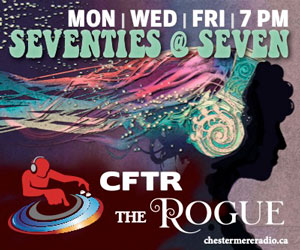With Alberta doubling its daily COVID infection count from 1000 to 2000 in just a few short weeks, I am continuing my lonesome hermitage at home, with naught but the ever-dwindling stocks in the wine cellar to help me pass the time.
Referencing the page-a-day wine calendar helpfully posted on the door to the wine cellar, I decided to crack open a bottle of Cabernet Franc to observe and celebrate the unimaginatively named Cabernet Franc Day, which occurs every year on the December 4th.
Cabernet Franc is one of the three main grapes used in Bordeaux, along with Cabernet Sauvignon and Merlot. Primarily used as a blending grape, mostly for softening a Cab Sauv, and giving a bit of zing to Merlot.
Cabernet Franc has a proud pedigree, with the ever-popular Cabernet Sauvignon being a cross of Cabernet Franc and Sauvignon Blanc.
Cabernet Franc is also an ancestor to several other Bordeaux grapes, including Carmenére, Malbec, and Merlot, making Cab Franc the granddaddy of half of the wines in my cellar.
The Cabernet Franc grape is thought to have originated in the Loire Valley of France, but rose to fame when it was planted in Bordeaux in the late 18th century. Despite its celebrity status, it is still less well known than its more famous offspring, Cab Sauv, also known as the most popular red grape in the world.
Cab Franc is sometimes referred to as a more feminine version of Cab Sauv, with softer tannins and a more pronounced and perfumed aroma. Indeed, Cab Franc and Cab Sauv share many similarities, with the two varietals mistaken for one another for hundreds of years.
Cab Franc tends to ripen a bit earlier than Cab Sauv, and is noticeably paler in colour, with a peppery finish on the tongue and rich aromas of fruit, cassis, violets, and sometimes tobacco.
The Bordeaux region of France is still home to the largest plantings of Cab Franc, followed closely by the Napa Valley region of California, extending upwards to the vineyards of Oregon and Washington, and even into our very own Okanagan Valley in BC.
I have been making regular pilgrimages to the Okanagan Valley for nearly 20 years, and I see more and more plantings of Cabernet Franc every year, with more single-varietal bottlings that allow the grape to fully express its unique characteristics. This accursed pandemic put the kibosh on a visit this year, so I hope to return in 2021.
For many years, Cab Franc had been relegated to the status of the most famous grape you had never heard of, because it was hidden as an unmentioned blending component in bottles labeled as Cab Sauv or Merlot.
Fortunately, the Cab Franc grape thrives in cooler climates, so the wineries of Washington and the Okanagan Valley are putting out very impressive examples of 100% Cab Franc wines.
My favourite is the Burrowing Owl Cabernet Franc, with a complex bouquet of dark cherry and chocolate, followed by notes of leather and tobacco from the extended oak ageing. Priced at $50, this is a special-occasion wine rather than a daily drinker, so I always try to lay down wines from Burrowing Owl for a year or two before enjoying them.
For a daily drinker, you can’t go wrong with the Black Sage Vineyard Cabernet Franc, found for $25 at your friendly neighbourhood booze merchant.
Faithful readers may recall that the Black Sage Vineyard was spun off from Sumac Ridge back in 2012, as part of a rebranding effort to emphasize the high quality of the grapes grown along Black Sage Road in the southern portion of the Okanagan Valley.
That particular stretch of real estate is home to some of the finest terroir for Canadian wines, and commands very high prices, which makes a $25 Cab Franc a tremendous value. The Black Sage Cab Franc is particularly fragrant, thanks to the abundance of sagebrush growing alongside the grapevines.
Our Canadian Cab Franc wines tend to be a bit more adventurous than their French cousins, with the winemakers of Bordeaux still hiding their Cab Franc behind Merlot and Cab Sauv. Fortunately, without centuries of tradition to bind us, the winemakers of Canada love to bottle 100% Cab Franc varietals, which excels in our cooler climes. Try one today!







